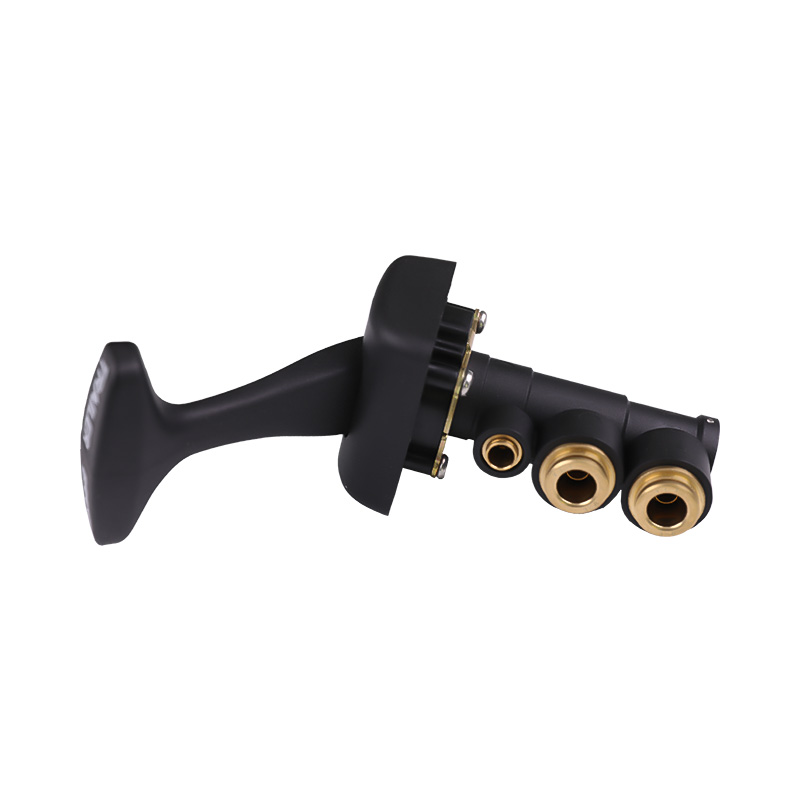Brake lag is a critical performance metric in air brake systems, quantifying the time delay between a driver depressing the brake pedal and the moment actual braking force is generated. Excessive brake lag severely compromises driving safety, particularly at high speeds or during emergency maneuvers. As the core actuator that converts pneumatic energy into mechanical energy, the performance of the brake chamber is intimately linked to the duration of brake lag.
I. Chamber Response Time and Internal Friction
The first major component contributing to brake lag is the chamber's air charging response time. The duration from the moment the air valve opens until compressed air enters the chamber and the diaphragm or piston begins to move is heavily influenced by the chamber's own design.
High-quality brake chambers utilize low-friction diaphragms or piston seals. If the internal friction within the chamber is excessive—due to, for example, aged, dry seals or stiction caused by worn push rod guide bushings—the air pressure must reach a higher threshold to overcome the static friction and initiate push rod movement. This extra time required for pressure build-up directly contributes to brake lag. In contrast, brake chambers incorporating advanced lubrication technology and precision guidance mechanisms ensure rapid movement of the diaphragm/piston at very low activation pressures. This design minimizes the activation delay and dramatically enhances system response speed.
II. Diaphragm Stiffness and Effective Area Stability
The key to brake chamber performance lies in the effective working area of the diaphragm (or piston). Instability in diaphragm quality and stiffness is a major factor contributing to both lag and inconsistent braking force.
In lower-quality brake chambers, the diaphragm material may experience stiffness degradation or localized deformation after prolonged use. This deformation causes the effective area acted upon by the air pressure to change, subsequently affecting the push rod's initiation speed and the linearity of force output. When air pressure is first applied, the diaphragm requires time to fully expand and transmit a stable thrust; this elastic hysteresis of the diaphragm is directly reflected as brake lag. Premium products utilize high-strength, low-creep elastomers to ensure that the diaphragm's geometry and stiffness remain stable throughout its expected lifespan. This achieves an instantaneous and precise conversion between air pressure and thrust, effectively minimizing the total brake system lag time.
III. Dual Impact of Exhaust and Release Speed
Brake lag encompasses not only the time taken to apply the brake but also the response time for the brake to release. The exhaust speed of the chamber is a crucial, reciprocal measure of its quick-response capability.
After a braking cycle concludes, the compressed air within the chamber must be rapidly vented to allow the push rod to retract quickly. If the chamber's exhaust port design is restrictive, the air passage is obstructed internally, or the diaphragm return spring force is insufficient, the air discharge will be slow. This not only prolongs the brake release lag but can also lead to brake drag, causing excessive heating of the brake drum/disc. Brake chambers with high-flow exhaust designs and optimized geometry maximize the airflow rate. When combined with high-rebound springs, they ensure the push rod retracts swiftly and completely. This fast-release capability is particularly vital for urban traffic and complex road conditions requiring frequent braking, guaranteeing the system's agility.
IV. Push Rod Guidance and Concentricity Precision
The brake chamber push rod is the vital component linking pneumatic actuation to mechanical braking. The guidance precision of the push rod within the chamber housing has a decisive impact on brake lag.
If the push rod has concentricity deviations or excessive clearance in the guide bushings—either from manufacturing or installation—it is prone to lateral friction or binding during extension under side loads or vibration. Any non-linear motion during the push rod's launch consumes pneumatic energy and time that should have been dedicated to generating braking force. Professional-grade brake chambers ensure precise straight-line movement of the push rod under all operating conditions through high-precision machining and reinforced guide bushings. This design minimizes mechanical resistance, ensuring the pneumatic command is converted into thrust without delay, serving as a reliable safeguard for reducing overall brake lag.
V. Environmental Adaptability and Seal Durability
The brake chamber is consistently exposed to the external environment, and the durability of its seals is directly related to its rate of performance degradation. Performance decline under harsh conditions is a common cause of increased brake lag.
Factors such as low temperatures, high humidity, salt spray, and dust can accelerate the aging of the chamber casing and seals. If the external seal (such as the dust boot) fails, contaminants enter the interior, increasing internal friction and causing sluggish push rod movement. If internal working seals develop leaks, it takes longer to build up sufficient effective braking pressure inside the chamber, thereby directly prolonging the brake lag time. High-quality products use weather-resistant engineered polymers and multi-layered sealing designs. This ensures a clean and dry internal environment, maintains the low-friction state of the diaphragm and push rod, and guarantees that brake lag performance remains consistent across diverse climates and operating conditions.






